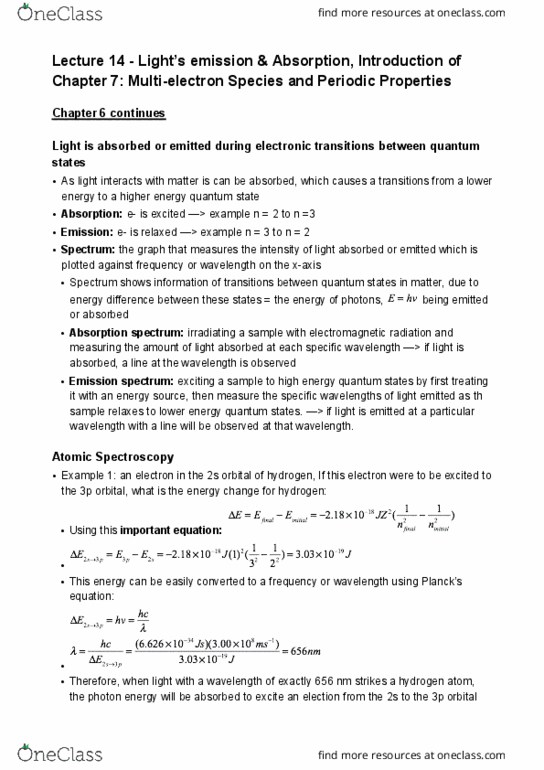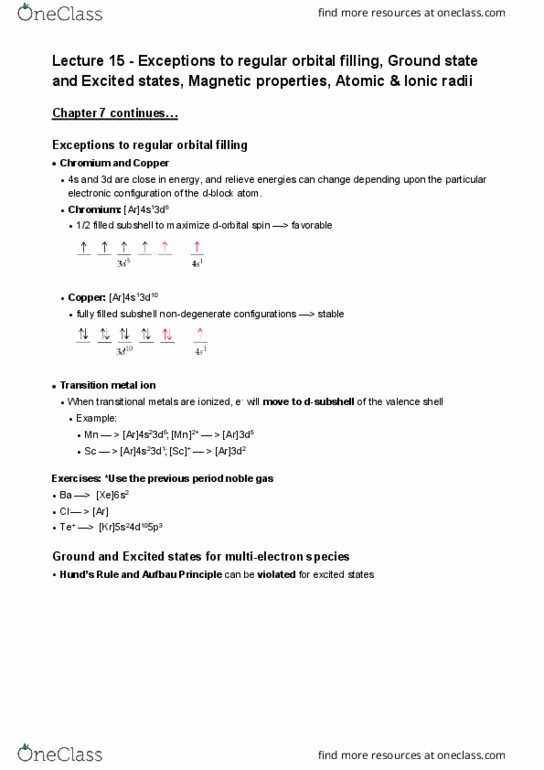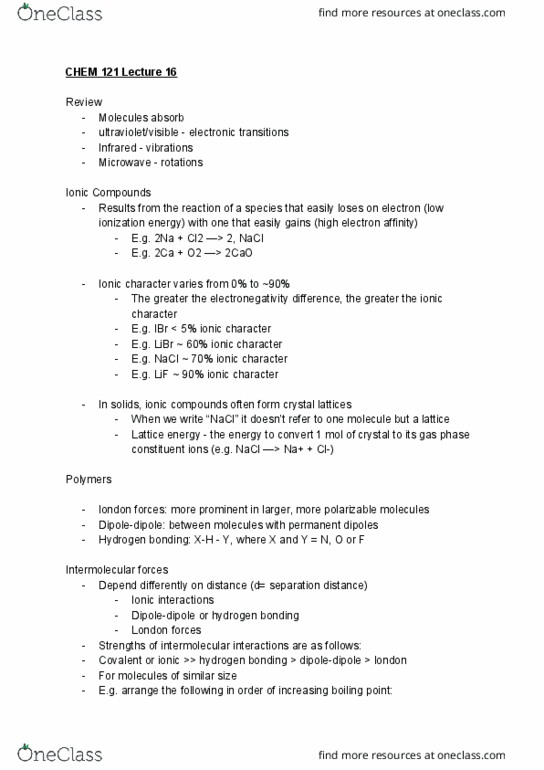CHEM 121 Lecture Notes - Lecture 15: Transition Metal, Noble Gas, Ionic Radius
CHEM 121 verified notes
15/38View all
Document Summary
Lecture 15 - exceptions to regular orbital filling, ground state and excited states, magnetic properties, atomic & ionic radii. Exercises: *use the previous period noble gas: ba > [xe]6s2, cl- > [ar, te+ > [kr]5s24d105p3. Ground and excited states for multi-electron species: hund"s rule and aufbau principle can be violated for excited states, pauli"s exclusion principle can never be violated (chirp, 7. 11) Magnetic properties: paramagnetic: species with one or more unpaired electrons, ex. Mn > [ar]4s23d5; [mn]2+ > [ar]3d5: diamagnetic: species with no unpaired electrons, ex. Zn > [ar]4s23d10; [zn]2+ > [ar]3d10. In many cases, no homoclear diatomic molecule exists, however the atomic radius may be deducted from other data. Calculate the atomic radius of carbon, given the following information: the h-h bond distance in h2 is 0. 74 angstrom; the c-h bond distance in ch4 is 1. 10. So, the covalent radius of h = 0. 74/2 = 0. 37 angstrom.




